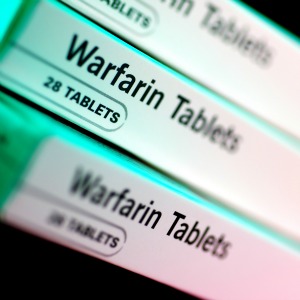GPs face a drive to prescribe warfarin alternatives, as NICE has decided to consider new QOF indicators for anticoagulation control.
NICE QOF experts will look at three potential indicators that would reward practices for making sure patients have more thorough and regular checks.
The decision, taken at a meeting of the NICE QOF advisory panel yesterday, comes as atrial fibrillation experts said too many patients taking warfarin have poor anticoagulation control, and are at high risk of stroke as a result.
Panel members suggested the move would be likely to mean more patients being offered one of the newer non-vitamin K oral anticoagulants (NOACs) like rivaroxaban, with some predicting prescribing of these would ‘rocket’.
The three indicators put forward for piloting were:
- The proportion of adults with atrial fibrillation taking a vitamin K antagonist who have their time in therapeutic range (TTR) recorded at each visit for INR assessment.
- The proportion of these who maintain an INR of 2-3.
- The proportion with poor anticoagulation control who have it reassessed.
Since updated NICE guidelines last year, GPs are advised to offer NOACs to patients unwilling to undergo regular monitoring, since these require less close monitoring than warfarin.
But the advice has been resisted by GP leaders who warned over-burdened GPs would not have the resources to go through the newer options with patients and help them weigh up the risks and benefits.
Yesterday’s meeting heard that rates of NOAC prescribing vary massively between CCGs, from as little as 1.4% to 62.1%.
A GP expert, who cannot be directly quoted under reporting rules from the meeting, said lower rates were down to CCGs restricting access to the more expensive drugs, rather than making sure patients on warfarin were well controlled.
The meeting also considered indicators for the CCG outcomes indicator set (CCG OIS), for which atrial fibrillation management was also considered to reflect the updated guidelines.
In response, the panel discussed GPs being tasked with carrying out regular pulse checks in patients over 65 under the OIS, with the aim of picking up more than 400,000 people with as-yet undetected atrial fibrillation.
This would see hypertension and heart disease patients tested annually and all other over-65s tested opportunistically.
Although the National Screening Committee has previously ruled out systematic screening, the recent SAFE study showed that opportunistic case-finding would be beneficial, the NICE panel was advised.

















